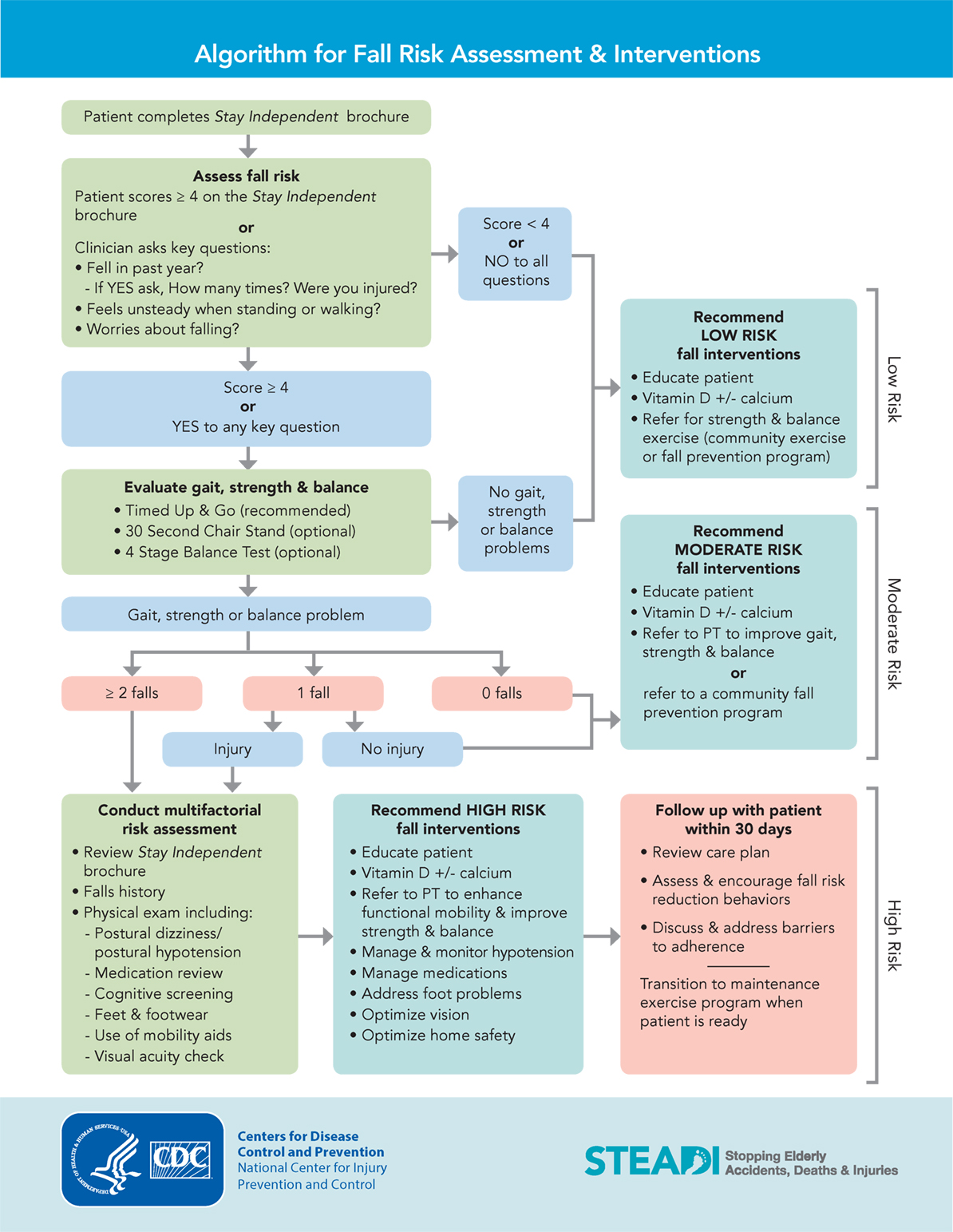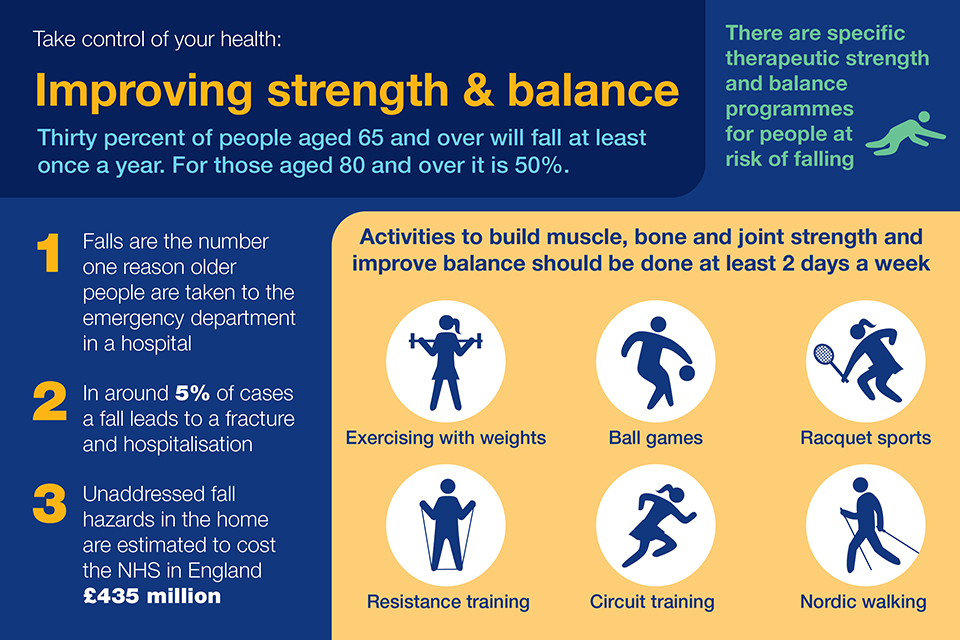Get This Report about Dementia Fall Risk
Get This Report about Dementia Fall Risk
Blog Article
The Buzz on Dementia Fall Risk
Table of ContentsGetting My Dementia Fall Risk To WorkSome Of Dementia Fall RiskThe smart Trick of Dementia Fall Risk That Nobody is DiscussingDementia Fall Risk Things To Know Before You Buy
A loss danger analysis checks to see just how likely it is that you will certainly fall. It is mostly provided for older adults. The assessment normally consists of: This includes a series of concerns regarding your overall health and wellness and if you've had previous falls or problems with balance, standing, and/or walking. These tools evaluate your strength, equilibrium, and gait (the way you stroll).Interventions are suggestions that might minimize your risk of falling. STEADI includes 3 steps: you for your risk of falling for your danger elements that can be boosted to try to prevent drops (for example, equilibrium problems, impaired vision) to reduce your risk of dropping by using efficient methods (for example, giving education and resources), you may be asked numerous concerns consisting of: Have you fallen in the past year? Are you stressed about dropping?
You'll sit down once again. Your service provider will certainly inspect just how lengthy it takes you to do this. If it takes you 12 seconds or even more, it might imply you go to greater risk for a fall. This examination checks strength and balance. You'll rest in a chair with your arms crossed over your breast.
The placements will certainly obtain harder as you go. Stand with your feet side-by-side. Move one foot halfway forward, so the instep is touching the huge toe of your various other foot. Relocate one foot completely before the various other, so the toes are touching the heel of your other foot.
A Biased View of Dementia Fall Risk
Many drops happen as an outcome of several contributing aspects; as a result, taking care of the risk of dropping starts with identifying the factors that add to fall threat - Dementia Fall Risk. Some of the most appropriate risk elements consist of: Background of previous fallsChronic clinical conditionsAcute illnessImpaired stride and balance, lower extremity weaknessCognitive impairmentChanges in visionCertain high-risk medications and polypharmacyEnvironmental variables can likewise enhance the risk for falls, consisting of: Poor lightingUneven or damaged flooringWet or slippery floorsMissing or damaged handrails and order barsDamaged or incorrectly equipped tools, such as beds, wheelchairs, or walkersImproper use assistive devicesInadequate guidance of individuals residing in the NF, including those that show hostile behaviorsA successful fall danger monitoring program needs a complete medical evaluation, with input from all members of the interdisciplinary team

The care plan ought to likewise consist of interventions that are system-based, such as those that promote a secure setting (proper lights, handrails, grab bars, etc). The effectiveness of the treatments need to be reviewed periodically, and the care strategy revised as necessary to reflect changes in the fall risk evaluation. Applying a fall threat management system utilizing evidence-based best technique can minimize the occurrence of falls in the NF, while limiting the possibility for fall-related injuries.
Dementia Fall Risk Fundamentals Explained
The AGS/BGS guideline recommends evaluating all adults matured 65 years and older for loss threat yearly. This testing is composed of asking people whether they have actually fallen 2 or even more times in the past year or sought clinical focus for a fall, or, if they have not dropped, whether they feel unsteady when walking.
People who have dropped when without injury must have their equilibrium and gait assessed; those with gait or equilibrium irregularities should receive added analysis. A history of 1 fall without injury and without gait or balance troubles does not necessitate additional evaluation beyond continued yearly loss threat testing. Dementia Fall Risk. A loss risk analysis is called for as part of the Welcome to Medicare examination

Little Known Questions About Dementia Fall Risk.
Documenting a falls background is one of the quality important source signs for autumn avoidance and monitoring. A critical component of risk assessment is a medication evaluation. Numerous classes of medicines boost loss threat (Table 2). Psychoactive drugs specifically are independent forecasters of drops. These medicines have a tendency to be sedating, modify the sensorium, and hinder balance and gait.
Postural hypotension can often be minimized by reducing the dose of blood pressurelowering drugs and/or stopping medicines that have orthostatic hypotension as a negative effects. Use above-the-knee assistance hose pipe and resting with the head of the bed elevated might additionally minimize postural decreases in high blood pressure. The recommended elements of a fall-focused checkup are revealed in Box 1.

A Pull time better than or equivalent to 12 Your Domain Name seconds suggests high loss threat. Being not able to stand up from a chair of knee height without utilizing one's arms shows raised fall threat.
Report this page